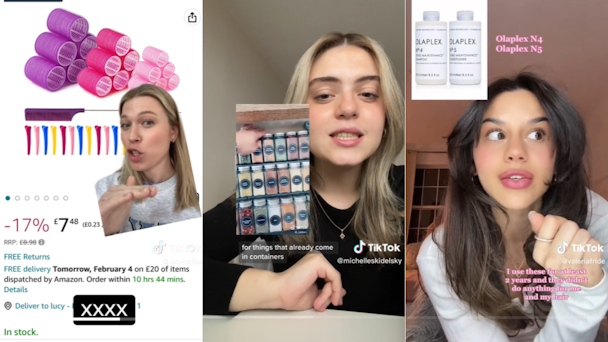Deinfluencing is here to stay, here’s how brands can keep up
Eve Wright, associate strategy director at EssenceMediacomX, explores how brands can get to grips with the new trend of deinfluencing.

Deinfluencing isn’t the be-all and end-all of branding on social media
In a world of conscious consumption, anti-capitalist uprisings and a cost of living crisis, it’s no surprise that people are growing tired of traditional influencers. But, if influencers are losing their touch, what is replacing them and why?
The answer lies in the new genre of deinfluencers
Deinfluencing is a trend that began in late 2022, emerging as an evolution of #empties – recommendations based on whether or not you had actually finished a product or if it was sitting gathering dust). Deinfluencers take it one step further by recommending tried and tested products, so you don’t have to waste your time and money on products that may not work for you.
Advertisement
Since then, the trend has evolved into three key themes.
First up, we have product hauls. Deinfluencers provide personalized recommendations from a single brand or retailer and create honest reviews on a wide selection of products. These reviews are balanced, with some positive and some negative feedback.
@lucykalice Amazon de-influencing haul … so upset about the earmuffs, they are SO bad #deinfluencing #deinfluencer #amazonhaul #amazonfinds #amazonmusthaves #amazonsavingspree #amazonfavorites #cleantok #revlonhairdryerbrush #amazonreviews #amazonuk amazon beauty finds Amazon cleaning finds #shoppinghaul de influencing trend @SonicScrubber ♬ original sound - Lucy Kalice
Next, we have dupes. Deinfluencers who pride themselves on being ‘in the know’ love this one. These videos often encourage purchases from smaller challenger brands or Amazon knock-offs that stray from popular opinion.
@valeriafride Don’t buy everything you see on here #deinfluencing #beautytips #sephorahaul ♬ Her Way (Sped Up) - PARTYNEXTDOOR
Last but not least, we have the ‘don’t waste your money’ theme. This is where deinfluencers encourage conscious consumption by debunking trending products that do not live up to their promises. This theme is an opportunity for consumers to save money and make informed purchasing decisions.
@michelleskidelsky Replying to @krishateresa my bank account hates me, save yours while you can #deinfluencing ♬ original sound - michelle
Why is deinfluencing on the rise?
The essence of the trend is twofold. On one hand, it is an attempt to support conscious consumption and on the other, a bid to regain credibility amongst followers.
This trend is making a big impact in the beauty and homeware categories, which initially benefited most from the ‘TikTok Made Me Buy It’ era. However, consumers started to notice the sheer volume of products that influencers just ‘couldn’t live without’ and yet were never seen using again. In fact, a whopping 87% of US consumers believe it's unlikely that influencers actually try all the products they promote.
This disruption of trust between influencers and their followers is not something to take lightly. We’ve seen the rise and fall of many influencer types and their demise is often irreversible.
Advertisement
First, there was the Zoellas of the world - the first generation of bedroom-based video creators who coined the term ‘Vlogging’ and created the most desirable career path for kids aged six to 17: being a YouTuber. They were relatable at first, but their sharp rise to fame on YouTube and the money that came with it meant that their relatability quickly tailed off.
Then came the uber-rich lifestylers of Instagram who captured our desire for aspirational and curated content. But their all-expenses-paid trips to Dubai during Covid lost them their following. And now, we're living in the era of unfiltered relatability. People are turning to TikTok for more relatable influencers – often with a beautifully British sense of humor and a desire to make the world a nicer place – who provide a more unfiltered view of life.
Influencers are the arbiters of trends – as their followers evolve, so will their content.
Suggested newsletters for you
What is the role of brands in this moment of change?
To succeed in the era of deinfluencing, marketers should be brave and willing to embrace new approaches that benefit all parties involved.
-
Select influencers that you sincerely believe your product will benefit from. Don’t fall into the trap of sending products to people based on their follower count. Instead, marketers should look for influencers who align with their brand values and have existing product users.
-
Take advantage of your entire product portfolio and the value of differing opinions. No product will ever be loved equally by everyone, but that is the joy of product discovery. When working with a large portfolio, a cross-brand influencer approach allows for honest reviews and, in return, credibility and higher sales.
-
Another important aspect for brands is to increase addressability across more of their media and marketing channels. Only 14% of consumers say brands ”greatly” know them, remember them, and understand their needs. By embracing addressability across more communication channels, brands can better compete on this level and communicate directly with consumers.
Deinfluencing is not something to be afraid of. Brands can be part of the solution by encouraging consumers to make more conscious purchasing choices and only buy products that are relevant to them.
As for what comes next, it’s human nature to prefer people-based recommendations, so influencers will remain in some guise – whether they be real people or AI influencers halfway around the world. But for influencers to stay credible with their followers, their methods of communication will continue to evolve and that may take brands to new places. Brands should embrace emerging content, collaborate with partners wisely and continue to move with the trends to remain relevant.
